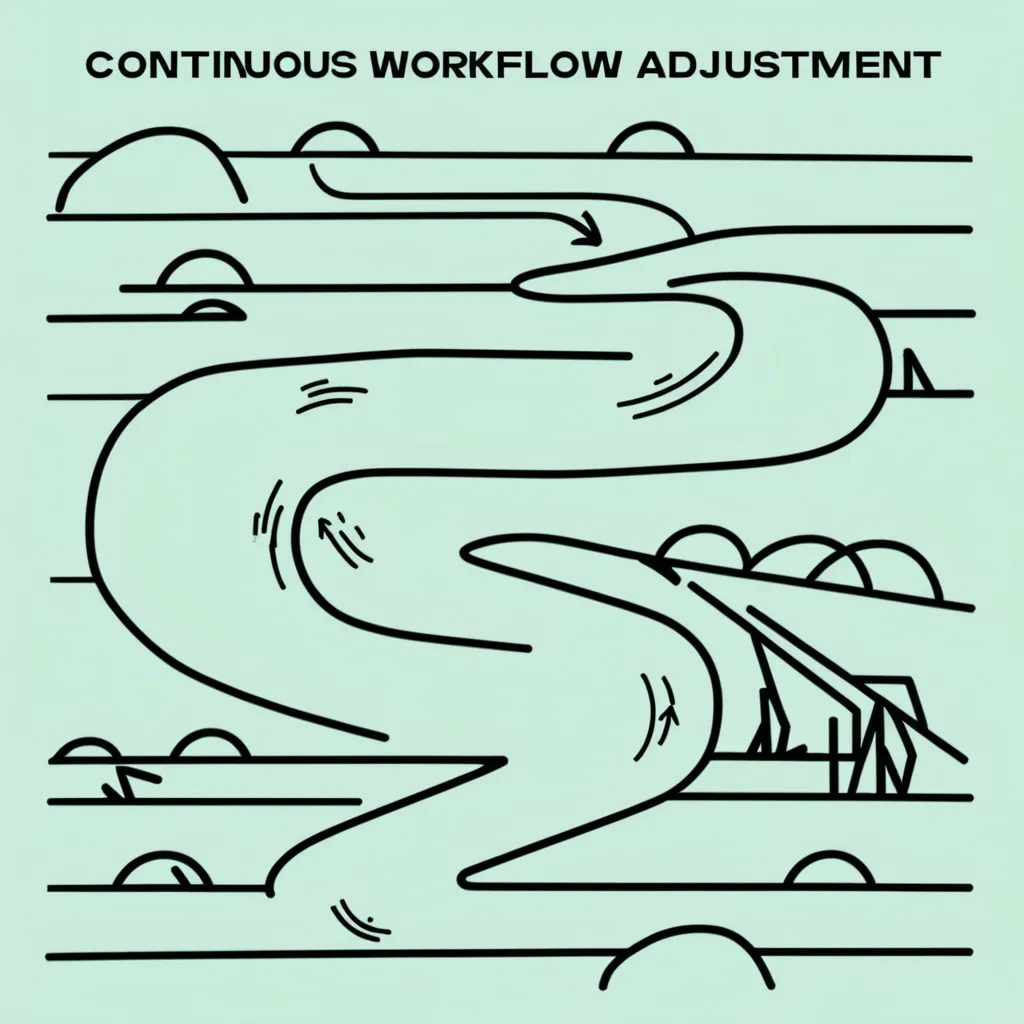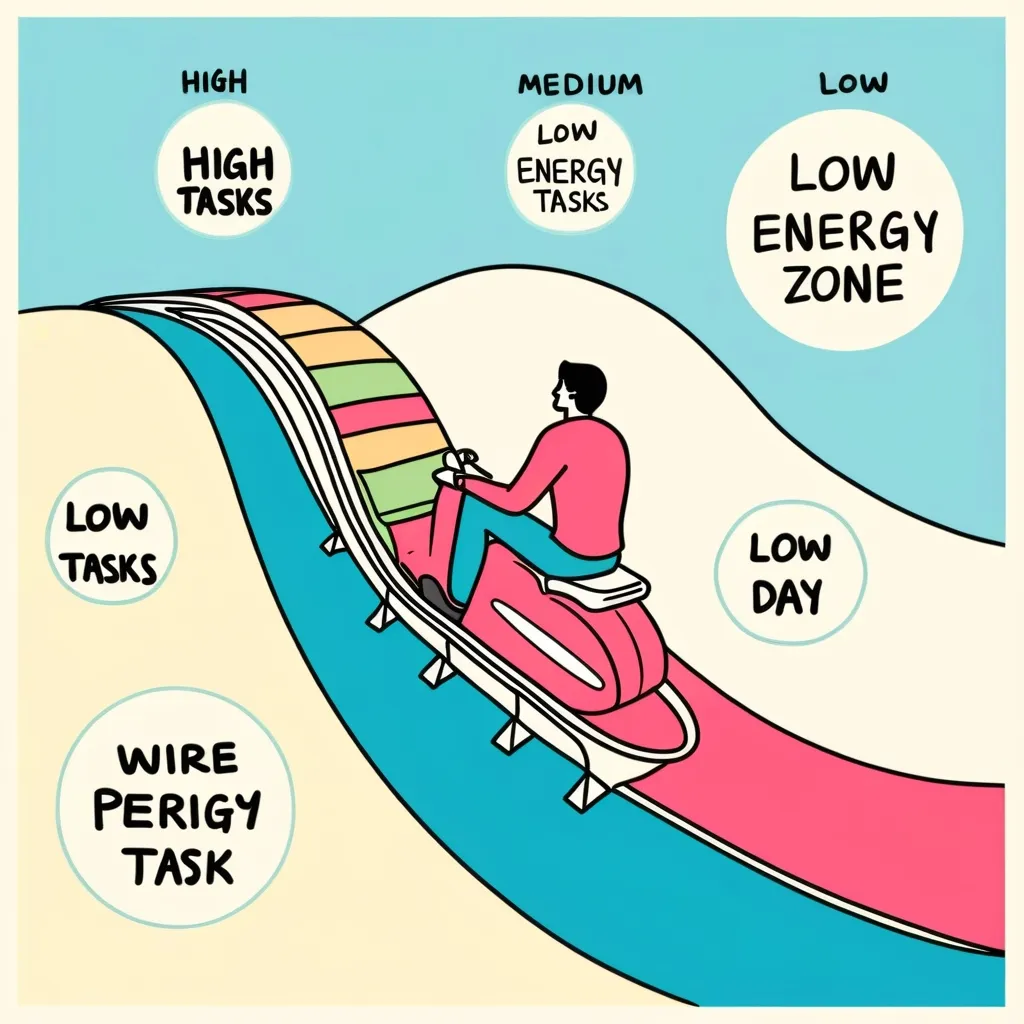Mastering the Art of Continuous Workflow Adjustment
In today’s fast-paced business world, staying ahead of the curve is crucial. One of the most powerful strategies for achieving this is the ‘Continuous Workflow Adjustment’ trick. It’s all about constantly refining and improving your workflows to keep them efficient, relevant, and in sync with your ever-changing needs.
At its core, this approach is built on the idea of continuous improvement. It’s like giving your workflows a regular health check-up, making sure they’re always in top shape. Think of it as fine-tuning your car’s engine for optimal performance. You wouldn’t wait until your car breaks down to service it, right? The same goes for your workflows.
Let’s say you’re running a small online store. At first, your order process might seem smooth sailing. But as your business grows, you might notice some hiccups. Maybe the manual data entry is starting to slow things down. By keeping an eye on your workflow, you can spot these issues early and fix them before they become major headaches. You could automate that data entry process and watch your order fulfillment speed up like magic!
Now, how do you actually go about adjusting your workflows? First things first, you need to identify where the bottlenecks are. It’s like being a detective, looking for clues in your day-to-day operations. Are your team members spending too much time searching for information? That might be a sign that your data management system needs a makeover.
I once worked with a marketing team that was constantly playing email ping-pong with the design team for every campaign. It was a huge time-suck. We mapped out their process and realized that all this back-and-forth was the culprit. The solution? We implemented a project management tool where both teams could share updates in real-time. It was like night and day - suddenly, everyone was on the same page without endless emails and meetings.
Communication is the secret sauce of any smooth-running workflow. It’s not just about talking more; it’s about talking smart. Using centralized communication tools can be a game-changer. It’s like having a virtual water cooler where everyone can catch up on what’s happening without drowning in email threads.
I remember working with a software development team that switched to a collaboration platform for all their project discussions. It was like they’d discovered a superpower. No more hunting through endless email chains for that one crucial decision. Everything was right there, easy to find and act on. It sped up their decision-making process and reduced misunderstandings big time.
Now, let’s talk about standardization and automation. These are like the dynamic duo of workflow efficiency. Standardizing processes is about creating a playbook for your tasks. It ensures everyone’s singing from the same hymn sheet, reducing errors and improving consistency. Plus, it makes it so much easier to bring new team members up to speed.
Automation is where things get really exciting. It’s like having a tireless assistant who never makes mistakes. Take a financial department, for example. Automating the invoicing process can ensure that every invoice goes out on time, with all the right info, every single time. It frees up your team to focus on the brainy stuff that really needs human touch.
But here’s the thing - your workflows need to be flexible too. The business world is always changing, and your workflows need to keep up. It’s like being a surfer, ready to ride whatever wave comes your way. A retail business that can quickly adjust its processes to handle a holiday rush without breaking a sweat? That’s the kind of flexibility we’re talking about.
Continuous monitoring and feedback are the secret weapons in your workflow adjustment arsenal. It’s about keeping your ear to the ground, always listening for ways to improve. I’ve seen customer service teams transform their performance by regularly reviewing their workflows and actually listening to feedback from both customers and team members. They were able to identify bottlenecks and make smart adjustments, like adding more staff during busy times or implementing a better ticketing system.
Here’s a pro tip: involve your team in the workflow optimization process. They’re the ones in the trenches every day, and they’ve got valuable insights into what’s working and what’s not. It’s like having a team of expert consultants right at your fingertips. Plus, when people feel their input is valued, they’re more likely to embrace changes and make them work.
I once worked with a sales team that was frustrated with their CRM system. Instead of just imposing a new system on them, we involved them in choosing a new one. The result? They not only got a system that actually met their needs, but they were also excited to use it. It was a win-win situation that boosted both efficiency and morale.
Documentation is another key piece of the puzzle. It’s like creating a map of your workflow that anyone can follow. By clearly recording every step and decision point, you’re building a valuable resource for your team. And don’t just file it away and forget about it. Regular reviews of these documents can help you spot areas for improvement and keep your workflows fresh and relevant.
Of course, it’s important to be aware of common pitfalls. Overly complex workflows can be more of a hindrance than a help. It’s like trying to navigate a maze when all you need is a straight path. Keep things simple and intuitive. And always make sure your communication channels are clear and direct. Nothing kills efficiency faster than miscommunication.
At the end of the day, all these efforts to improve your workflows have one ultimate goal: customer satisfaction. When your internal processes are running like a well-oiled machine, it shows in the quality of your products or services, your delivery times, and your communication with customers. It’s like a ripple effect that spreads out to enhance the overall customer experience.
I’ve seen this play out beautifully in a restaurant that streamlined its order-taking and delivery process. By ensuring orders were accurate and delivered promptly, they saw a significant boost in customer satisfaction. The positive reviews started pouring in, and repeat business went through the roof. It just goes to show how internal efficiencies can directly impact your bottom line.
So there you have it - the power of continuous workflow adjustment. It’s about staying nimble, always looking for ways to improve, and never settling for “good enough”. In a world where change is the only constant, this approach can be your secret weapon for staying ahead of the game.
Remember, it’s not about making massive overhauls overnight. It’s about making small, consistent improvements that add up over time. So take a look at your workflows. Where can you streamline? Where can you automate? Where can you communicate better? Start making those adjustments, and watch as your efficiency soars. Your future self (and your customers) will thank you for it!






